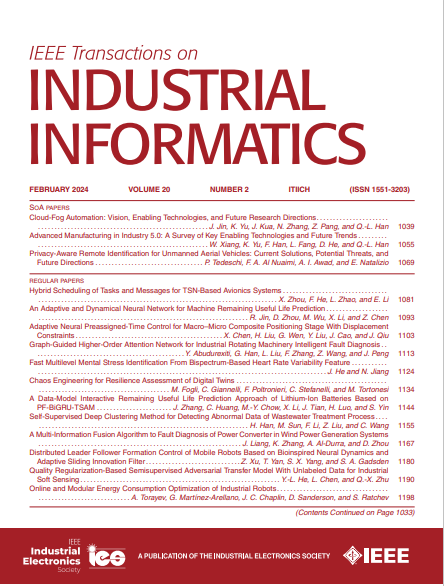利用制造商提供的额定值识别光伏组件的11参数功能形式模型
IF 9.9
1区 计算机科学
Q1 AUTOMATION & CONTROL SYSTEMS
引用次数: 0
摘要
鉴于光伏发电成本的持续下降及其与零售电价的竞争力日益增强,准确预测光伏发电性能变得越来越重要。虽然制造商通常在标准测试条件(STCs)下对光伏组件进行评级,但现在通过在低辐照条件(lic)和标称工作电池温度(NOCT)下报告模块数据,其评级得到了提高。最近,Angulo等人(2024)提出了一种增强型PV模型,能够再现PV组件在各种大气条件下的行为。尽管该模型的优越性在Angulo et al., 2024中进行了深入的讨论,但没有解决从制造商提供的评级中识别其特征参数的问题。本文提出了一种基于STC、LIC和NOCT评级的参数识别方法。手头的问题涉及到解决一个由11个非线性方程组成的复杂系统,并通过逐步缩小搜索空间和生成调整函数来接近。该方法以自动化的方式在整个加州能源委员会光伏数据库中进行测试,该数据库目前包含17710个模块,实现了99.8%的趋同率。通过比较能量预测与实验测量,包括文献中可用的最先进的模型,来评估所确定模型的质量。结果表明,与最佳竞争模型相比,该模型的预测误差降低了约9%。本文章由计算机程序翻译,如有差异,请以英文原文为准。
Identification of the 11-Parameter Functional Form Model for Photovoltaic Modules Using Manufacturer-Provided Ratings
In light of the ongoing decline in photovoltaic (PV) generation costs and its growing competitiveness with retail electricity prices, accurately predicting PV performance is increasingly important. While manufacturers have typically rated PV modules at standard test conditions (STCs), their ratings are now being enhanced by reporting module data at low irradiance conditions (LICs) and nominal operating cell temperature (NOCT). Recently, an enhanced PV model was proposed Angulo et al., 2024, capable of reproducing the behavior of a PV module across a wide range of atmospheric conditions. Although the superiority of this model is thoroughly discussed in Angulo et al., 2024, the identification of its characterizing parameters from ratings provided by manufacturers is not addressed. This paper proposes a parameter identification methodology relying on STC, LIC, and NOCT ratings. The problem at hand involves solving a complex system of eleven nonlinear equations, and is approached by progressively reducing the search space and generating adjustment functions. The methodology is tested in an automated fashion over the entire California Energy Commission PV database, which currently contains 17 710 modules, achieving a convergence rate of 99.8%. The quality of the identified model is assessed by comparing energy predictions against experimental measurements, including state-of-the-art models available in the literature. Results indicate that the identified model reduces prediction errors by about 9% compared to the best competitive model.
求助全文
通过发布文献求助,成功后即可免费获取论文全文。
去求助
来源期刊

IEEE Transactions on Industrial Informatics
工程技术-工程:工业
CiteScore
24.10
自引率
8.90%
发文量
1202
审稿时长
5.1 months
期刊介绍:
The IEEE Transactions on Industrial Informatics is a multidisciplinary journal dedicated to publishing technical papers that connect theory with practical applications of informatics in industrial settings. It focuses on the utilization of information in intelligent, distributed, and agile industrial automation and control systems. The scope includes topics such as knowledge-based and AI-enhanced automation, intelligent computer control systems, flexible and collaborative manufacturing, industrial informatics in software-defined vehicles and robotics, computer vision, industrial cyber-physical and industrial IoT systems, real-time and networked embedded systems, security in industrial processes, industrial communications, systems interoperability, and human-machine interaction.
 求助内容:
求助内容: 应助结果提醒方式:
应助结果提醒方式:


